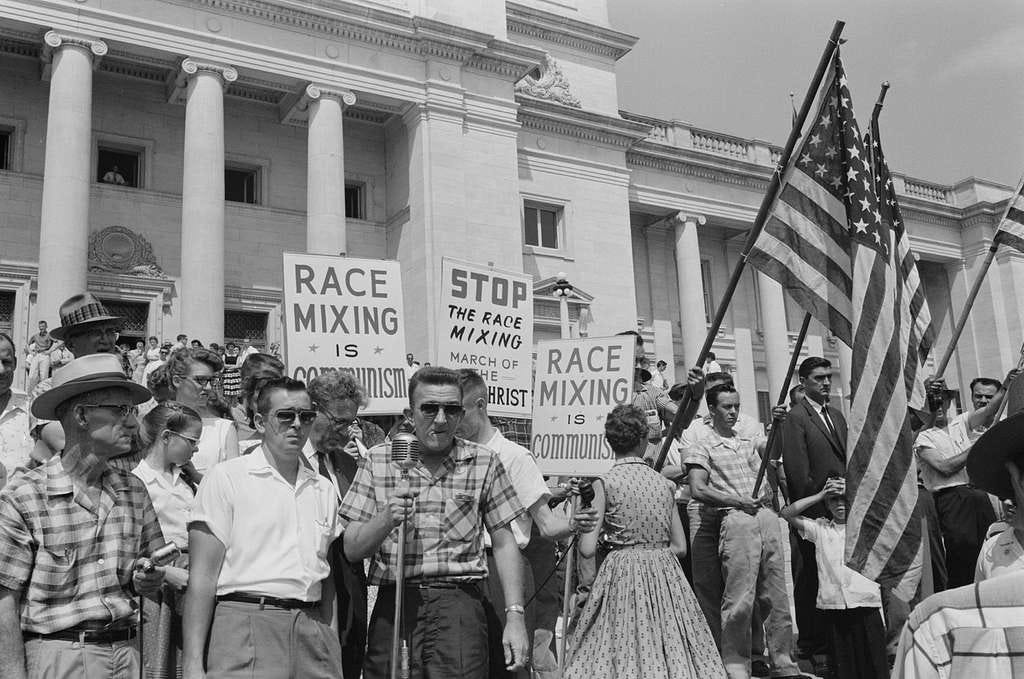Part 1: The Original Southern Strategy: Nixon’s Blueprint for Political Realignment
How Nixon’s Southern Strategy Capitalized on racial divisions and Set the Stage for Donald Trump’s Revival
Enjoying the content? Help support independent journalism by becoming a paid subscriber!
In American political history, the Southern Strategy is a term that represents a calculated shift in the way Republicans courted white voters in the South following the Civil Rights Movement.
While initially associated with Richard Nixon’s 1968 campaign, the strategy would become a critical element in reshaping the Republican Party and American politics as a whole.
Decades later, Donald Trump revived and expanded upon the Southern Strategy, creating what many have referred to as Southern Strategy 2.0, using racial polarization as a political tool.
This article will explore the original Southern Strategy and how it set the foundation for what would later become a hallmark of Trump’s political tactics.
What Was the Original Southern Strategy?
The Southern Strategy was the Republican Party’s deliberate effort to gain the support of white Southern voters who felt alienated by the Democratic Party’s embrace of civil rights legislation in the 1960s.
Historically, the Democratic Party dominated Southern politics, especially during the Jim Crow era when segregation was entrenched in Southern states.
However, as the national Democratic Party began to support civil rights for African Americans, many white Southern voters started to feel that their political interests no longer aligned with the party.
Readers Like You Keep This Free
This platform is powered by readers like you. Your support allows us to keep all content free and accessible to everyone.
This shift created an opening for Republicans, who sought to capitalize on Southern discontent under the guidance of Richard Nixon and his advisors.
Nixon’s campaign strategically appealed to Southern whites by emphasizing states' rights, "law and order," and a general opposition to federal intervention in race matters.
This approach allowed Nixon to signal sympathy for Southern opposition to racial integration without explicitly endorsing segregation, making the Republican Party a more appealing option for voters who were resistant to the changes brought by the Civil Rights Movement.
Key Tactics: Racial Dog Whistles and States’ Rights
A defining feature of the Southern Strategy was the use of racial dog whistles—coded language that appealed to racial resentment without overtly invoking race.
Nixon and other Republican candidates framed their opposition to civil rights as a matter of supporting states' rights or maintaining law and order.
This rhetoric resonated with Southern whites who were concerned about the federal government’s role in enforcing desegregation, but it did so without the explicit racism associated with earlier segregationist rhetoric.
For example, Nixon’s calls for “law and order” were designed to address white fears of urban unrest and the perceived rise in crime, which were often linked to racial tensions.
While not explicitly racial, this language was understood by many white voters as a stand against the perceived chaos brought about by the Civil Rights Movement and the demands for racial justice from African Americans.
Additionally, Nixon’s emphasis on states' rights played into the longstanding Southern resentment of federal intervention, particularly regarding racial integration in schools and public spaces.
By advocating for states' rights, Nixon was able to present himself as a defender of Southern autonomy while still appealing to national conservative voters.
Impact on U.S. Politics: The Solid South Turns Red
Nixon’s Southern Strategy had a profound impact. By the 1970s, the Republican Party had begun to make significant inroads into the South, breaking the Democratic Party’s long-standing hold on the region.
This realignment reshaped the political landscape of the United States, turning the South into a Republican stronghold that remains influential in national elections to this day.
Before the Southern Strategy, the South had been a Democratic stronghold, largely due to its opposition to Reconstruction and the Republican Party's post-Civil War policies.
But by appealing to white Southern voters’ racial anxieties and resentment toward the federal government’s civil rights policies, Nixon’s Republican Party laid the groundwork for a shift that would endure for decades.
The Southern Strategy didn’t just affect the South, though. It influenced the GOP’s approach to national elections, as Republicans realized the power of appealing to racial fears and using coded language to attract white voters across the country.
As a result, issues such as crime, welfare, and immigration became increasingly racialized in political discourse, often serving as proxies for discussions about race without explicitly mentioning it.
Conclusion: Setting the Stage for Trump’s Revival
The Southern Strategy’s success in shifting the political allegiance of white Southerners to the Republican Party made it a cornerstone of GOP electoral strategy for years to come.
The tactic allowed Republicans to position themselves as the party of conservatism, law and order, and traditional values—all while subtly appealing to racial fears and opposition to civil rights progress.
Fast-forward to the 21st century, and we see a revival of these tactics in Donald Trump’s Southern Strategy 2.0.
Trump took the dog whistles of Nixon’s era and amplified them, often discarding the coded language in favor of more overtly racist and xenophobic rhetoric.
In doing so, he has re-energized the racial divisions that Nixon’s campaign first exploited. In the next article, we’ll explore how Trump built on this foundation, using race and fear to galvanize his political base in a much more explicit way.
Explore the Entire Series on the Southern Strategy 2.0: Intro, Part 1, Part 2, Part 3, Part 4, and Part 5.




